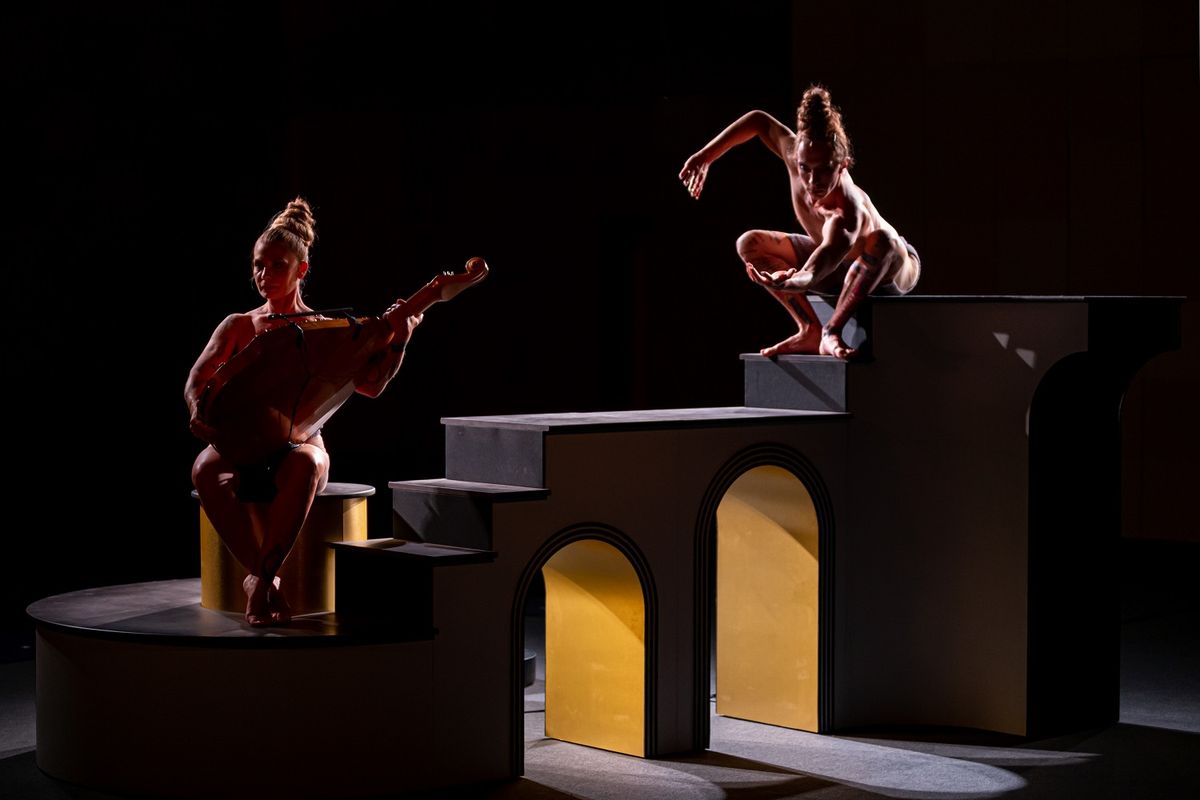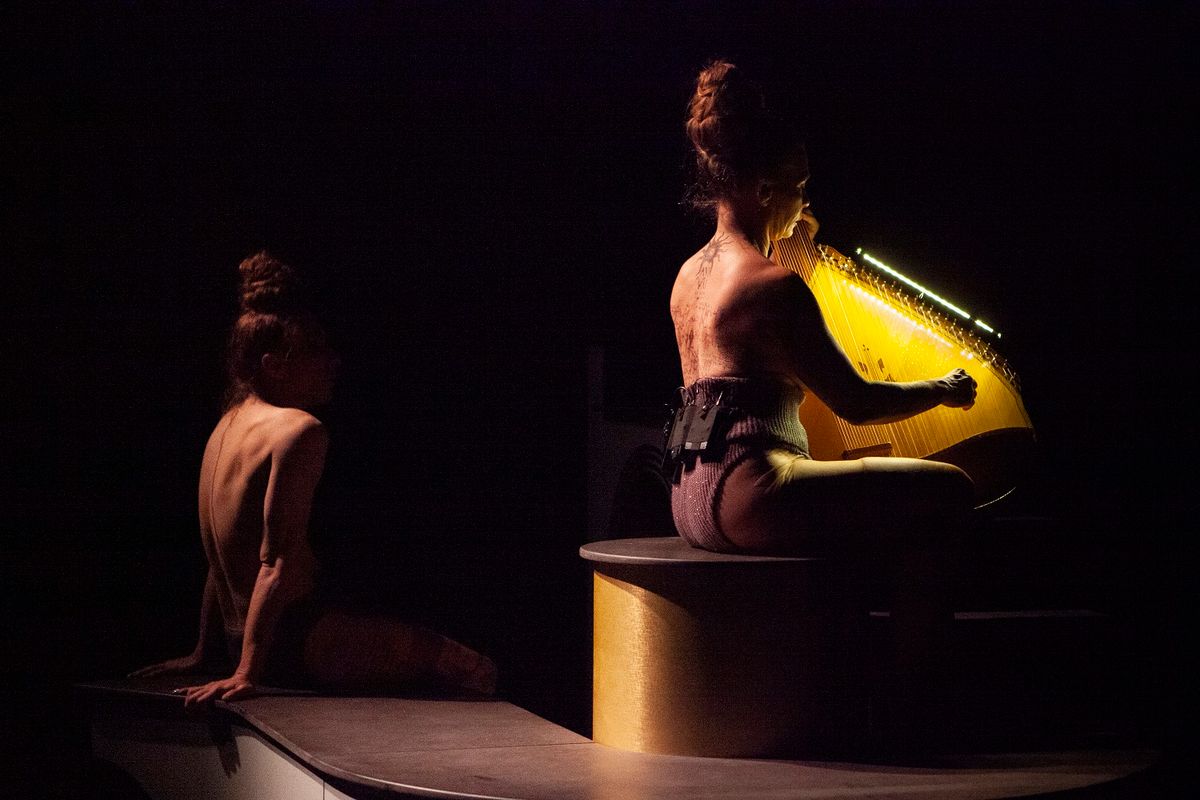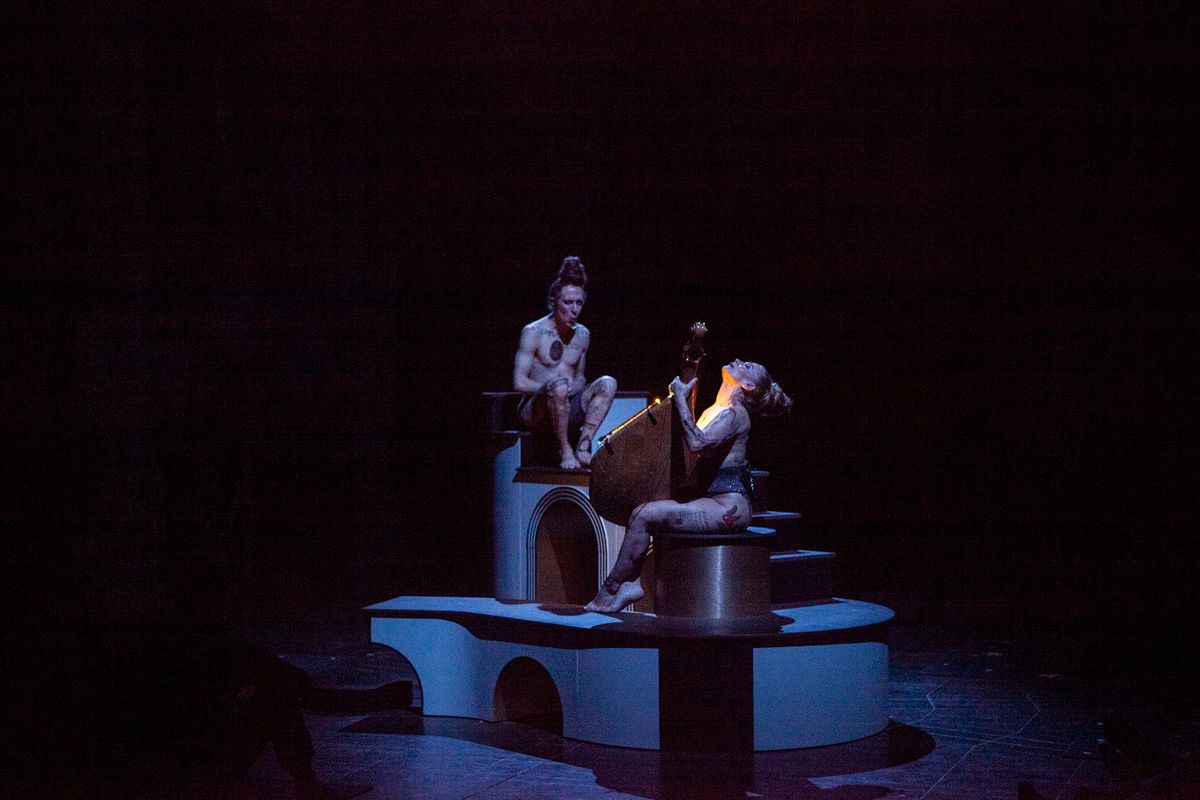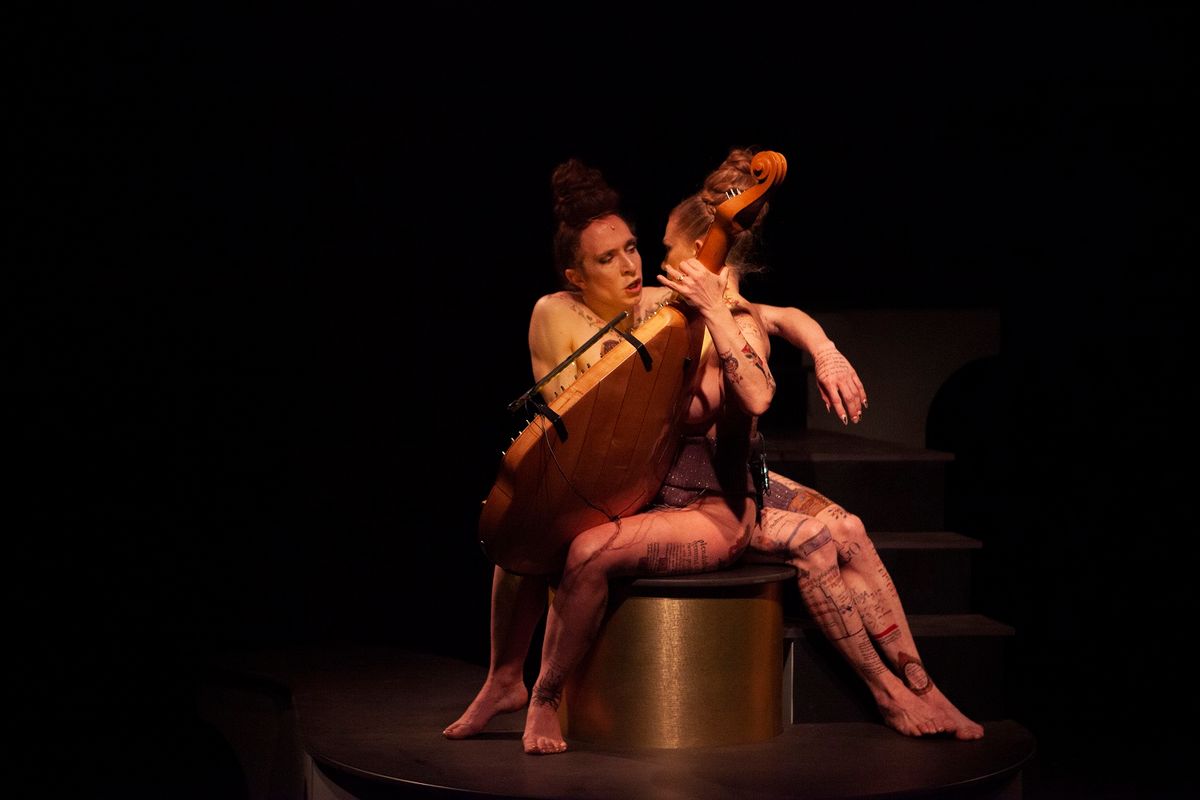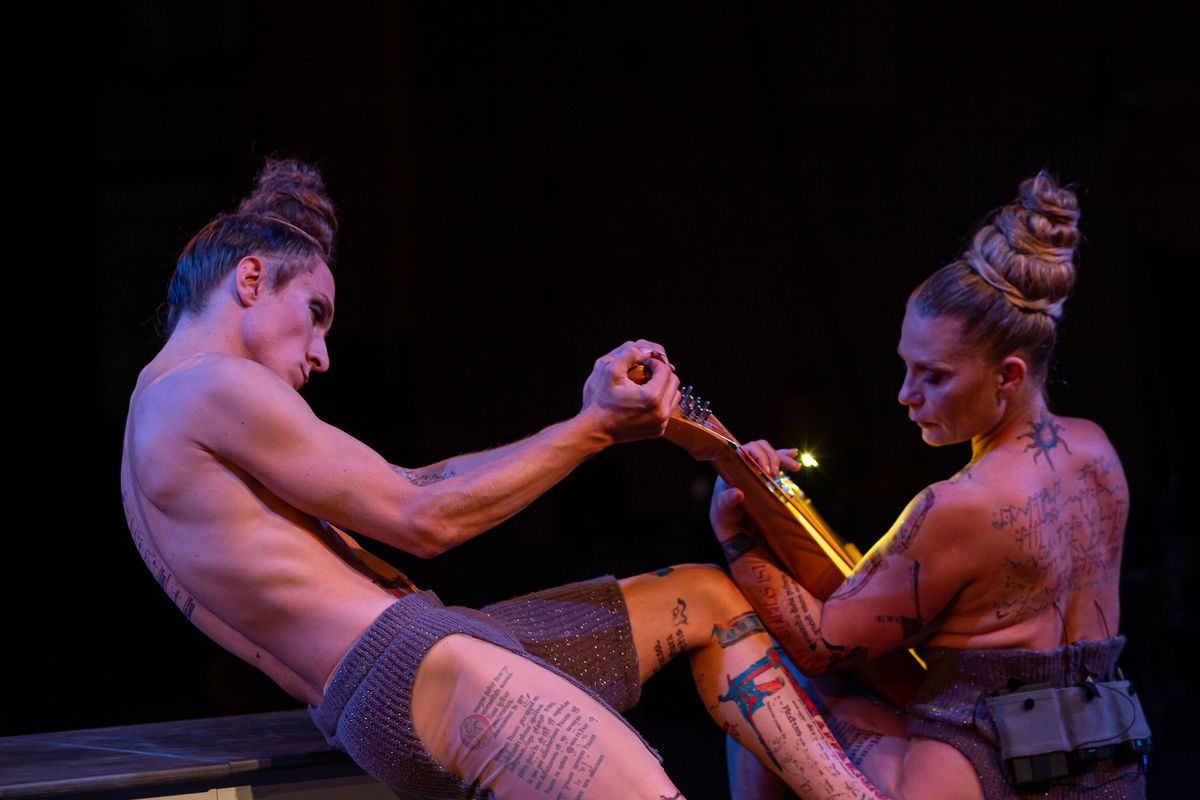
Symphonia Harmoniæ Cælestium
-
4 okt20:30 - 22:45TR25 Schouwburg, RotterdamThe Kitchen
-
5 okt20:45 - 23:00TR25 Schouwburg, RotterdamThe Kitchen
English text
De cyclus is een van de wondermooie werken van de 12e-eeuwse abdis en mystica Hildegard von Bingen, die in deze vertolking uitgroeit tot een muzikale, choreografische en beeldende totaalbeleving.
Hildegard von Bingens werk stamt uit een haast vergeten tijd met een compleet ander wereldbeeld. Maar Chaignaud en Brébant blijven ver weg van een museale uitvoering. De haast magische poëzie die uit de gregoriaanse gezangen spreekt is ook voor luisteraars vandaag als balsem voor de ziel.
Chaignaud en Brébant bouwen een meditatieve, hypnotiserende en soms extatische klankwereld met stem en bandura, een klassiek Oekraïens snaarinstrument gebaseerd op de luit. Ze gebruiken geen bladmuziek. Hun zang en spel zijn een puur fysieke creatie, hun bewegende lichamen getatoeëerd met de teksten en beelden van Hildegard.
François Chaignaud is danser, choreograaf, historicus en geschoold operazanger. Na zijn afstuderen van het Conservatoire National Supérieur de Danse de Paris in 2003 werkte hij met choreografen als Boris Charmatz en Emmanuelle Huynh.
Vanaf zijn eigen creatie He’s One that Goes to Sea for Nothing but to Make him sick (2004) valt Chaignaud op door de manier waarop hij dans en zang met elkaar vervlecht. Hij gebruikt muziek- en dansinvloeden van over de hele wereld en bevraagt de conventies in het westerse theater. Sinds 2005 werkt François Chaignaud samen met Cecilia Bengolea. Samen maakten ze onder meer Sylphides (2009), (M)IMOSA (met Trajal Harrell en Marlene Monteiro Freitas, 2011), en Say Yes To Another Excess – TWERK (2012).
Marie-Pierre Brébant deed een balletopleiding en studeerde klavecimbel en basso-continuo aan het conservatorium van Boulogne-Billancourt. Ze was onder meer artistiek leider van het barokensemble Sept Mesures de Soie en werkte met Richard Foreman (Don Giovanni, Mozart). Ook maakte ze eigen interpretaties van muziek zoals The Doors voor klavecimbel en zang, of Belà Bartoks Mikrokosmos voor elektrische gitaar en klavecimbel.
English
A total experience based on Hildegard von Bingen’s heavenly hymn cycle. Meditative, mesmerising and at times ecstatic.
François Chaignaud (vocals) and Marie-Pierre Brébant (bandura) invite you to get comfortable in their space while they perform parts of the Symphonia Harmoniæ Cælestium Revelationum hymn cycle. It is one of the stunningly beautiful works by the 12th-century abbess and mystic Hildegard von Bingen. In this rendition it blossoms into a total experience with music, choreography and compelling visual elements.
Hildegard von Bingen’s work was created in an almost forgotten era, when people’s world view was radically different from ours. Yet Chaignaud and Brébant steer clear of presenting it as a museum piece. The almost magical poetry of the Gregorian hymns is just as soul-nourishing for listeners today.
Chaignaud and Brébant create a meditative, mesmerising and at times ecstatic sonic universe, using only a voice and the bandura, a classic Ukrainian string instrument based on the lute. They aren’t using sheet music. Their singing and playing are a purely physical creation, their moving bodies tattooed with Hildegard’s lyrics and imagery.
François Chaignaud is a dancer, choreographer, historian and trained opera singer. After graduating from the Conservatoire National Supérieur de Danse de Paris in 2003 he worked with choreographers Boris Charmatz, Emmanuelle Huynh and others.
From the moment he created his own show He’s One that Goes to Sea for Nothing but to Make him sick (2004), Chaignaud has stood out for the way he interweaves singing and dancing. He uses musical and dance influences from all over the world and questions the conventions of Western theatre. Since 2005 François Chaignaud has worked with Cecilia Bengolea, creating shows like Sylphides (2009), (M)IMOSA (with Trajal Harrell and Marlene Monteiro Freitas, 2011), and Say Yes To Another Excess – TWERK (2012).
Marie-Pierre Brébant was trained as a ballet dancer and studied harpsicord and basso-continuo at the conservatoire of Boulogne-Billancourt. She was the artistic director for the baroque ensemble Sept Mesures de Soie and worked with Richard Foreman (Don Giovanni, Mozart). Brébant has also published her own adaptations of music by The Doors, for harpsicord and vocal, and of Belà Bartok’s Mikrokosmos, for electric guitar and harpsicord.




